Context: Ethics have broad applications in different fields of study and different contexts. Like other fields of study, ethics have a significant impact on the decisions made in computing concerning software artifact production and its processes. Hence, in this research, ethics is
[...] Read more.
Context: Ethics have broad applications in different fields of study and different contexts. Like other fields of study, ethics have a significant impact on the decisions made in computing concerning software artifact production and its processes. Hence, in this research, ethics is considered in the context of requirements engineering during the software development process.
Objective: The aim of this paper is to discuss the investigation results regarding ethical problems of requirements engineering processes by taking sample software developing companies and exposing existing research gaps.
Method: This research uses interviewing, focus group discussions, purposive sampling, and qualitative analysis research methods.
Result: This research finds an absence of industry practices, professional responsibility code of conduct standards, and other guidelines within companies when integrating ethical concerns of software during requirements engineering. It also indicates that almost all companies have no identification methods and checking mechanisms for ethical concern considerations. Furthermore, the major identified ethical concerns are classified into six categories as requirements identification problems, quality-related problems, carrying out unpermitted activities, unwillingness to give requirements, knowledge gaps and lack of legal grounds/rules for accountability.
Conclusion: From the findings of this research, it can be concluded that, in the case software companies, there is no specific method for identifying ethical concerns. Additionally, there are no standards and guidelines used within the companies. This implies the need to overcome the existing and emerging ethical issues of requirements engineering.
Full article



